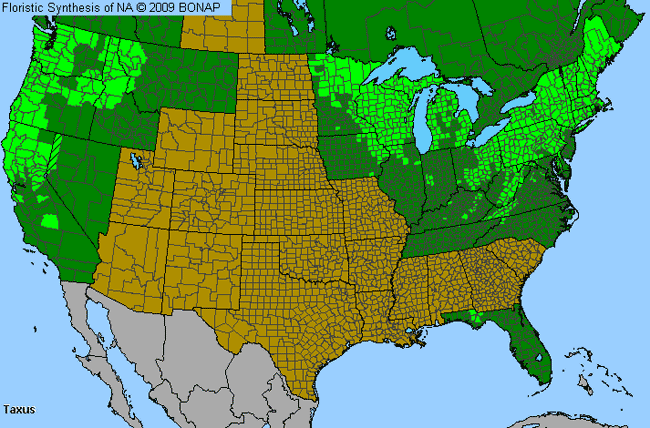Yew (Taxus)

Yew Genus Details

Eight species of evergreen coniferous shrubs and trees are native to the Northern Hemisphere with 5 being native to the U.S. Plants can grow to a height of 3' to over 50' for the tree forms. Yews have two-ranked, narrow needles or leaves about one inch long with 3 light-green and 2 dark-green bands on the underside. Male (pollen-producing) and female flowers are on separate plants. Fruits are fleshy, pea-size, red berries with an open end that shows a single hard seed inside. Depending on the quantity eaten, the seeds and foliage are usually poisonous when eaten by livestock. With increased use of yew shrubs as foundation plantings, the possibility of the pollen having an allergenic importance may increase. The western yew (Taxus brevifolia) is the source of taxol, an anti-cancer drug.
Yew Allergy Info

Pollen from yew plants are considered minor offenders in allergenicity. Japanese research proved there was significant reactions among skin-tested patients.
Yew Pollen Description

No pollen description is currently available.
Species in This Genus

Allergenicity Legend:
 Mild Allergen |
Mild Allergen |
 Moderate Allergen |
Moderate Allergen |
 Severe Allergen |
Severe Allergen |
 Allergy Test Available
Allergy Test Available
Yew (Taxus) is a genus of the TAXACEAE family.
This genus includes the following allergenic species:
This genus includes the following allergenic species:













